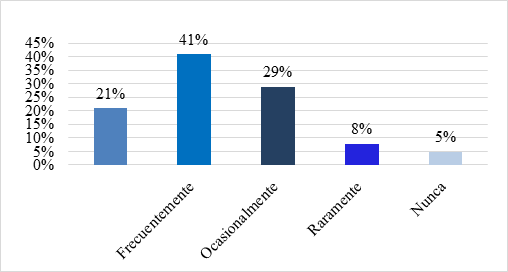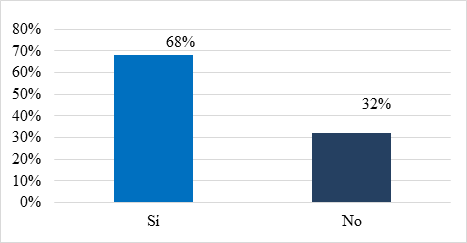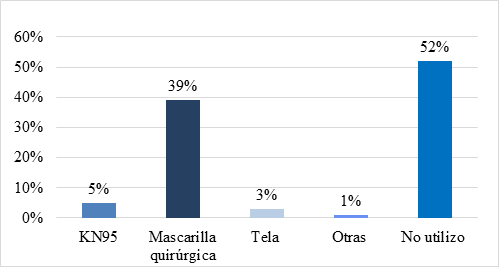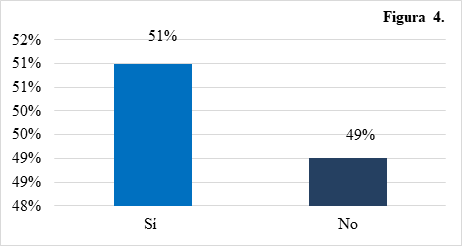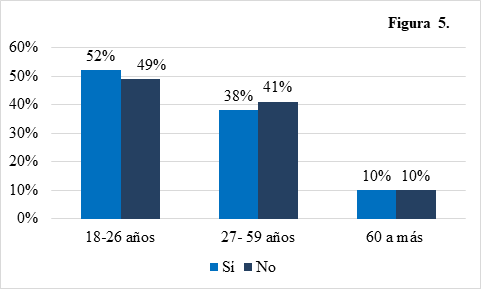Previous Issues Volume 5, Issue 5 - 2023
Environmental Determinants and Hygiene Habits Related to the Development of Acute Respiratory Infections in Adults Attending P/s OPC, León III Quarter, 2023
Rocha Peña Víctor Saúl1,*, Méndez Hidalgo Nathaly Nicole2, Mendieta Megan Julissa2, Montoya Rivera Diana Isabella2, Torrez Ríos Nexalia Magdalena2
1Licenciado en ciencias de Enfermería, Docente del Departamento de Enfermería. Coordinador de la comisión de Vicerrectoría de Innovación y emprendimiento en enfermería, miembro del Comité de Investigación y Desarrollo en Enfermería, CIDE – UNAN León, Nicaragua
2Bachilleres en ciencias y letras, estudiantes de Enfermería, Dpto. Enfermería, Facultad de Ciencias Médicas, UNAN-León, Nicaragua
*Corresponding Author: Rocha Peña Víctor Saúl, Licenciado en ciencias de Enfermería, Docente del Departamento de Enfermería. Coordinador de la comisión de Vicerrectoría de Innovación y emprendimiento en enfermería, miembro del Comité de Investigación y Desarrollo en Enfermería, CIDE – UNAN León, Nicaragua; Email: [email protected]
Received Date: October 17, 2023
Published Date: November 02, 2023
Citation: Saúl RPV, et al. (2023). Environmental Determinants and Hygiene Habits Related to the Development of Acute Respiratory Infections in Adults Attending P/s OPC, León III Quarter, 2023. Mathews J Nurs. 5(5):25.
Copyrights: Saúl RPV, et al. © (2023).
SUMMARY
Acute respiratory infections (HAIs) include a complex and heterogeneous group of diseases considered a public health problem; The WHO estimates about 3.9 million deaths annually; In Nicaragua it is one of the pathologies that most affects the population. The main objective of this study is to describe the environmental determinants and hygiene habits related to the development of acute respiratory infections in older adults, and thus evaluate how much these factors participate.
The present study is of a cross-sectional quantitative descriptive type, where a sample of 375 people aged 18-90 years was worked, who belong to sector 41 and 42 of the Oscar Pérez Cassar health post, to whom a survey was conducted that It was subsequently processed by the SPSS statistical program. Acute respiratory infections are one of the main reasons for consultation in Nicaragua; Therefore, environmental determinants influence its incidence, and hygiene habits.
Among the environmental determinants that had the greatest relevance were exposures to dust with 85% of the population, followed by the development of respiratory processes due to change of season 68%. These factors, since they are not modifiable, have a greater relationship in the development of HAI. Hygiene habits 99% of the population practices hand washing, 52% do not use a mask, and 51% do not change their toothbrush after an episode of flu and cough; Hygiene habits are modifiable, they serve as measures to minimize the risk of suffering from HAIs.
Keywords: Environmental determinants, hygiene habits, acute respiratory infections
INTRODUCTION
Acute respiratory infections (HAIs) constitute a group of diseases produced in the respiratory system. They include a complex and heterogeneous group of high-frequency diseases that compromise one or more parts of the respiratory system. They are caused by viral, bacterial, fungal microorganisms or a combination of them, with a period of less than 15 days and sometimes it is complicated by pneumonia [1].
The etiology of HAIs involves a large number of microorganisms, with viruses, fast-growing bacteria, atypical bacteria, and in immunosuppressed patients some species of fungi and mycobacterium being more common [2].
It is the most frequent infection in the world and represents an important public health issue. The WHO estimates about 3.9 million deaths annually from acute respiratory infections, of which 3 million would be serious, with an estimated mortality between 250,000-500,000 [3].
In the Americas, it is estimated that approximately 131 thousand deaths are linked to HAIs caused mainly by environmental pollutants in low-income regions and approximately 100 thousand people die due to the same etiological factor in developed countries [4].
In Nicaragua, acute respiratory infections (HAIs) are the pathology that has affected Nicaraguans the most in 2017. In the northeast in 2017, 1,162,043 positive patients with this condition were detected nationwide, which represents an increase of 14% in relation to the same period last year, reveal the records of the Weekly Epidemiological Bulletin of the Ministry of Health (MINSA) [5].
In 2021, Menéndez D. et.al. conducted an investigation on the environmental risk factors associated with acute respiratory infections in older adults, demonstrating that the environmental factors that predominated in the development were dust 35%, exposure to smoke 30%, overcrowding 18% and exposure to humidity 17 % [6].
It is stated that “environmental factors, such as air, soil, water pollution, climate change and exposure to chemicals, contribute to more than 100 diseases or injuries, including conditions at the level of the respiratory tract” and that these produced around 12.6 million deaths, all due to the environment, that is, from living or working in unhealthy environments [6].
Hygiene habits are also influential factors in the development of HAIs, which may include poor hand washing, incorrect use of masks, changing toothbrushes, biosafety measures, etc.
Veliz T. et.al., in 2021, with their study under the title Epidemiology of respiratory infections and predisposing risk factors in adults, established that HAIs in adults constitute one of the leading causes of medical attention in the world, between the ages of 31 to 40 years 20.83% presented acute rhinitis, from 41 to 50 years acute pharyngitis 34.78% and 51 to 61 years acute rhinopharyngitis 28.57; 100% of those surveyed used masks during the infection and performed hand hygiene [7].
In 2020, Téllez B. et.al. conducted a study on the Characterization of the behavior of acute respiratory infections, in which it established that the population over 20 years of age represented 51.3% of the cases diagnosed with HAI, those aged 25-59 were 56.75% of cases in the adult population, adults aged 65 and over accounted for 35.5% of the total cases [8].
In order to reduce the high rate of morbidity and mortality in HAIs, it is necessary to determine the risk factors, such as hygiene habits and environmental determinants that cause the population to have an incidence of HAIs, and to be able to structure measures to prevent, reduce or eliminate the incidence of HAIs.
Therefore, the following research question is raised.
What are the environmental determinants and hygiene habits related to the development of acute respiratory infections in adults who attend P/s OPC, León III quarter, 2023?
Raising our next objective: Describe the environmental determinants and hygiene habits related to the development of acute respiratory infections in adults who attend the P/s OPC, León III quarter, 2023.
MATERIALS AND METHODS
A cross-sectional quantitative descriptive study was carried out. It is descriptive because the data obtained in greater depth was explained in more depth and it is quantitative because it allowed us to reflect the data obtained in greater depth. The study was carried out at the Oscar Pérez Cassar Health Post, which borders to the north with the Oscar Pérez Cassar neighborhood, to the south with the Villa Soberana neighborhood, to the east with everything will be better distribution field, to the west with the Arca church of Salvation.
Regarding the universe, the adults who belong to the Oscar Pérez Cassar Health Post were surveyed, having a total of 13,000 inhabitants, to which the sample calculation formula was applied for a total of 375 who carried out their tests. surveys. The formula used to obtain our study samples was the following.
Sample
n= Z2 ×P×Q×N/(e)2(N-1) + Z2 ×P×Q
N= Population total (13,000 People)
P= Proportion of occurrence in the event 50% (0.5)
Q= Complement of P (1-P) = 1-0.5 Z= Confidence level n= 1.962 ×0.5× (1-0.5) ×13,000/ (0.05)2 × (13,000- 1) +(1.96)2×0.5× (1-0.5) n = 375 thus knowing the number of participants that needed to be surveyed for the study.
The primary sources of information were the participants surveyed and the questions that were applied to them in the surveys, however, we used secondary sources of information such as articles, theses, encyclopedias, websites, and biomedical pages.
One of the methods used to evaluate our surveys was the Likert scale. Our participants were people between the ages of 18-90 years, who belong to sectors 41 and 42 of OPC, our participants were asked if they wanted to participate in the survey, it should be noted that both female and male sex could participate in the survey.
Taking into account the inclusion criteria that the participants are adults between the ages of 18-90 years, who belong to sectors 41 and 42 of the Oscar Pérez Cassar Health Post, who wish to participate in the study, of both sexes and who have attended for consultations by IRAS
The dependent study variable is Acute Respiratory Infections and the independent variables are environmental determinants and hygiene habits. For data collection, a request letter was written, addressed to the director of SILAIS-León, explaining the objective of the research.
The techniques used for data collection were a survey with closed questions regarding sociodemographic data, environmental determinants and hygiene habits related to the development of acute respiratory infections in adults of the OPC. The pilot test was carried out with the inhabitants of sector 10 of the La Arrocera health post, since they had similar characteristics to our study population, which allowed us to verify the validity and confidentiality of the instrument, we worked with 10% of our population. Sample, which corresponds to 37 participants.
After collecting the information obtained from the surveys, the data were processed through the statistical program SPPS version 21, the Excel program and Microsoft Word were used.
With respect to ethical aspects, a letter of informed consent was prepared, addressed to each of the participants explaining the objective of the research, emphasizing that the information is anonymous, it was handled solely by the research team, they had the autonomy of participate or withdraw at any time they wish; the research was used for investigative purposes.
RESULTS
In the present study, our population of 375 adults, with an age range of 18-90 years, in the study, the ages of 18-26 years predominated with 51% (192), with an average of 32, and mode of 19; 55% are female (208), urban origin corresponds to 88% (331), regarding marital status 74% (276) are single, regarding education 52% (195) are university students ( a), and the student occupation represents 37% (139).
Regarding the environmental determinants related to the development of acute respiratory infections, the results obtained with the surveys applied, in consideration of the frequency of exposure to dust, 41% (154) of the participants claim to be frequently exposed to dust, and the minority 5% (2) state that they are never exposed to dust. See figure 1.
Frequency of exposure to dust
Regarding the development of respiratory processes (flu, cough) due to the change of season, 68% (254) of the study population affirmed yes, on the other hand, 32% (121) claimed no. See figure 2.
Respiratory processes due to change of season
Source: Survey, applied 08/03/2023
In relation to hygiene habits that are intrinsically related to the development of acute respiratory infections, the use of a mask as a means of protection stands out. According to the data collected in the study, 52% (194) of those surveyed do not use a mask, However, 39% (145) use a surgical mask and 1% (5) use another type of mask. See figure 3.
Source: Survey, applied 08/03/2023
Regarding the change of toothbrush after an episode of flu and cough, 191 participants (51%) responded that they do and 184 participants (49%) affirm that they do not change their toothbrush. See figure 4.
Changing the toothbrush after finishing an episode of flu and cough.
Source: Survey, applied 08/03/2023
In relation to the variable of respiratory processes due to change in season with the variable of grouped ages, it is determined that 52% (133) of the population between the ages of 18-26 do suffer from a respiratory process due to season change. See figure 5.
Grouped ages * Do you suffer from respiratory processes (flu, cough) due to the change of season?
Image 1
Image 2
Image 3
DISCUSSION
The vast majority of study participants are exposed to dust, Menéndez Darwin describes with respect to dust "inhaling dust on several occasions... can cause chronic and serious respiratory diseases."
Regarding the frequency with which the participants are exposed to dust, 41% expressed being “frequently”, which coincides with what was stated by the Center for Disease Control and Prevention, who express that dust consists of particles of a size less than 10 microns and that inhalation of any type of dust causes irritation of the respiratory tract and, after repeated exposure, can lead to chronic bronchitis.
Regarding respiratory processes due to the change of season, it was shown that 68% of the participants suffer from respiratory processes, which agrees with what was stated by Espinosa Zulay, who demonstrates that the increase in temperature favors the production of certain bacteria; Likewise, cold air irritates and generates inflammation in the upper airways.
Regarding the information obtained through the surveys, we can determine that 52% of the population expresses not using masks to protect themselves from respiratory infections, which contradicts the fact that the WHO guides and recommends that using masks helps prevention and protection. control of acute respiratory infections with epidemic and endemic tendency, this document provides guidance, regulations and prevents the control of Acute Respiratory Infections by using masks.
Regarding changing the toothbrush after finishing an episode of flu and cough, 51% of the participants reported whether to do it; With what was written by Pérez O. it reflects that the Escherichia Coli bacteria prevails in the bristles of the brush after undergoing a respiratory process (pneumonia), this verifies that many microorganisms predominate in the brush after suffering an episode of flu and cough.
CONCLUSION
By analyzing the results of this research study on the environmental determinants and hygiene habits related to the development of acute respiratory infections in adults who attend the Oscar Pérez Cassar Health Post, the following points are concluded:
With respect to sociodemographic data, the study population was made up of 375 inhabitants who attend the Oscar Pérez Cassar Health Post, of which, the majority of participants are between the ages of 18-26 years, with an average age 32 years and fashion 19 years; Likewise, there was a prevalence of the female sex, mostly single and of urban origin.
In relation to the most prevalent environmental determinants in the development of acute respiratory infections in adults, it is dust and the frequency of exposure to it, the majority of the population is exposed. The development of respiratory processes due to the change of season stands out, where the majority reported suffering from them.
The habit of smoking is not a fact that behaved in accordance with the research since the vast majority expressed no, however, the small percentage of people who do smoke are at risk of suffering from a respiratory infection; On the other hand, no overcrowding situations were determined, there are green areas and trees near the participants' homes.
Regarding chemicals, we were able to establish in the research that a large part of the participants are exposed to them, since they use them in their homes, these products being one of the determinants for the development of acute respiratory infections.
Regarding exposure to rain, we can state that, through the information collected, we determined that the majority of the population is not exposed to rain and if they use means of protection for it, therefore, we can propose that rain and exposure to it is an influential factor for the development of acute respiratory infections.
Regarding hygiene habits, it was determined that the majority of the population washes their hands with soap and water; Likewise, more than half use hand sanitizer as a hygiene measure to reduce acute respiratory infections.
The majority of the population does not use a mask because of this they are more likely to suffer from an acute respiratory infection; Likewise, the majority of the population reports changing their toothbrush after finishing an episode of flu or cough, which is accepted as a preventive measure to avoid getting sick, just like changing the brush after two months, thus preventing the spread of microorganisms.
Through the investigative study carried out, significant information was collected about the impact of factors on the development of an acute respiratory infection. Acute respiratory infections are one of the main reasons for consultation in Nicaragua.
Environmental determinants are part of the environment and are related to the incidence of respiratory infections, taking into account that they are not factors that can be changed; However, hygiene habits preserve health and prevent diseases; Consequently, the practice of hygiene rules over time becomes a habit and an important measure to stop the spread of acute respiratory infections.
REFERENCES
1. Beltran K. et al. (2013). Etiology of acute respiratory infection (ARI) in adults over 60 years of age from a geriatric care center in Bogotá. [degree work]. Bogota. Pontifical Javeriana University.
2. Lopez M. et al. (2016). Acute respiratory infections: brief overview that justifies their behavior. Scientific information magazine. 95(2): 339-355.
3. Huaman H. (2017). Incidence and knowledge of acute respiratory infections (ARI) in patients under 5 years of age, at the San José de Chincha-Perú Hospital. Deica Autonomous University.
4. Coaquiere J, Taipe Y. (2022). Study of knowledge about the consumption of medicinal plants used in acute respiratory infections in adults in the district of Cerro Colorado, Arequipa. Lime. María Auxiliadora University.
5. Leytón A et al. (2018.). Environmental and personal factors related to acute respiratory infections in children under 5 years of age who attend the William Rodríguez health center. León: National Autonomous University of Nicaragua, UNAN-León.
6. Menéndez D, et al. (2021). Environmental risk factors associated with acute respiratory infections in older adults who attend the Anconcito health center. Freedom. Santa Elena Peninsula State University.
7. Veliz T, Ponce D, Mendoza K, Valero N. (2021). Epidemiology of respiratory infections and their predisposing factors in adults of the Jipijapa canton. Mastery Sci. 7(4):892-914.
8. Téllez B, Valdés ML, Díaz JA, Duany LE, Santeiro LD, Suarez S. (2020). Characterization of the behavior of acute respiratory infections. Cienfuegos Province.
9. Colinet J. (2019). Health consequences of overexposure to respirable carbon and silica dust.
10. Climate change and respiratory diseases. Sports & Health Magazine (2017).
11. Labry A. Bermúdez C, Martinez T, Ruiz E. (2013). Infectious diseases microbiology. 39(9):436-444.
12. Taco OPP. (2017). Microbiological analysis of toothbrushes in students of the Dentistry E course of the PS, Ecuador.
